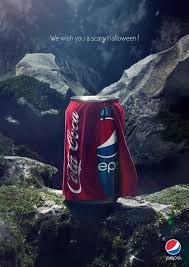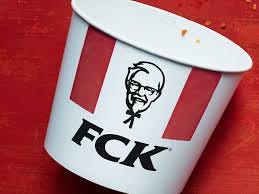"Some Rise, Some Fall, Some Climb"
What the Solar Industry Can Learn From the Brand Powers of FMCG, Fast Moving Consumer Goods
There’s something timeless about a truly powerful brand and knowing where the brand stands in people’s minds. Whether it’s Intel, WWE, KFC, Papa John’s, Pepsi, M&M’s, or Temptations (global brands all of whom I worked with) the top brand players know that brand power isn’t fluff—it’s a moat. It’s scale. It’s velocity. It’s a self-reinforcing engine for profitable growth. Not an original theory.
In FMCG high performing teams, we were trained to think in brand powers—mental availability, distinctiveness, share of voice, household penetration. Yet when I made the leap into residential solar, what struck me was how little this language is spoken, let alone applied in strategic planning.
And that’s a problem.
Because in the emerging residential solar sector—especially in opening new markets where building trust are table stakes —there’s no reason brand building can’t (and shouldn’t) be a competitive advantage. It’s just that few are playing that game well enough to emerge from the challenging category reputation that homeowners, politicians and community leaders already have for solar.
This post breaks down the 7 Brand Powers—a framework I leaned on in my early days in FMCG—and shows how each applies (or is missing) in the solar world today. We’ll look at:
How PepsiCo and MARS make brand power a strategic weapon
What PosiGen Solar is doing to build a brand in a commoditized, compliance-heavy space
Why solar marketers need to think more like FMCG brand leaders—and less like sales ops analysts
Let’s break down the 7 Brand Powers, from the view of two sides of the growth coin:
Brand Power FMCG Brand Example Solar Industry Reality Notes
1. Mental Availability Pepsi is top-of-mind in any impulse moment. In solar, there are no impulse moments. But when your roof leaks or power bill spikes, who do you remember? PosiGen is working on this through community brand building—door-to-door, schools, and neighborhood ambassadors.
2. Physical Availability MARS products are everywhere—corner store to airport kiosk. In solar, “availability” means qualified service zip codes + interconnection + incentives. FMCG wins here through distribution muscle. Solar has a fragmented, utility-tied bottleneck.
3. Distinctiveness Doritos: shape, color, flavor, tone of voice. Instant recognition. Most solar brands look the same: blue logos, sustainability messaging, photos of panels. PosiGen is experimenting with a culturally distinct tone rooted in New Orleans heritage. More of this, please.
4. Penetration FMCG is obsessed with household penetration—% of homes that bought you in last 12 months. Solar? We still talk about “NEM eligibility” or “lead volume.” Time to measure penetration in a zip code. Not just leads. Not just installs. Real brand share. Let’s redefine Total Addressable Market and qualify it.
5. Pricing Power Brands like Gatorade or Pedigree Premium command price tiers because of emotional value. In solar, pricing is regulatory, opaque, and race-to-the-bottom. Long-term opportunity: solar brands that can premiumize through trust, speed, and transparency.
6. Memory Structures Reese’s has decades of built mental associations. Even the orange bag is a cue. Most solar brands don’t last long enough to build this. And they rarely advertise. This is a massive missed opportunity. Build codes, slogans, logos, jingles. Think FMCG, not compliance.
7. Brand Love / Trust The best FMCG brands aren’t just loved. They’re trusted to deliver. In solar, trust is everything—but no one invests in brand metrics to track it. PosiGen invests in Net Promoter Scores, monitoring of reviews and local testimonials. That’s been a huge effort for the team to turn around really challenging numbers when we arrived years ago. But we still need a brand health tracker for solar.
What Needs to Change in Solar
Here’s the brutal truth: most solar brands are sales channels, not brand builders. They optimize for immediate acquisition at the expense of long-term brand equity.
Compare that to a FMCG business where:
The brand is the moat
Velocity wins shelf space
Marketing spend is a long-term investment, not a quarterly cost
Distinctiveness is studied, not guessed
If I were building a new solar company tomorrow, I’d hire a former FMCG brand manager before I hired my next sales ops lead. Because if you don’t define your brand, the marketplace—or the utility—will do it for you. The brand shows up everywhere in the customer experience, at the table in the home, online and in their communities. Let me back off a bit and reassure you that we will also rely heavily on our FP&A and Sales Enablement teams to show us the metrics that matter in our dashboards on par with what sales teams are using daily. If growth can be a priority for all functions, we will see marketing tied more closely to each lever that can be pulled to accelerate sales momentum.
I grabbed this graph with the intention to provoke further thinking. Here’s one quick side by side comparison between FMCG brands and category solar brand assessments.
Final Thought
Residential solar will eventually go through its version of the FMCG revolution. Those who build mental availability, distinctiveness, and brand trust before commoditization hits hardest are going to win. Simple concepts like this viral ad from KFC was directly tied to ROAS favorability. Confident brands can take these risks.
For More Reading
Byron Sharp – How Brands Grow (yes, read the damn thing again)
Ben Thompson’s essay on Aggregation Theory — helps explain why solar needs brand pull, not just channel push
Acquired.fm episode on MARS — the candy empire is still privately held and ruthless about brand discipline. It’s not a podcast, it’s a two and a half hour audio book, but full of gold!
Interview with PosiGen founder Tom Neyhart — on establishing trust in LMI markets
Want to jam on this? Or thinking about how to bring real brand muscle into sustainability or better for you brands?
Let’s talk.
—
John D. Ross Jr.
Follow me on LinkedIn







